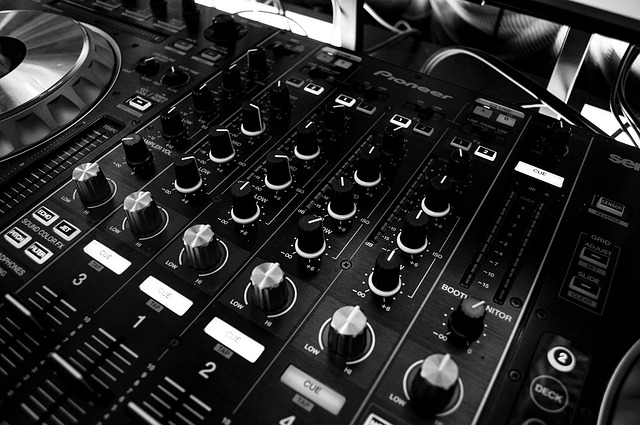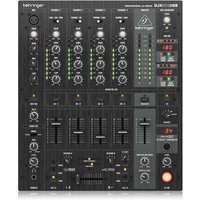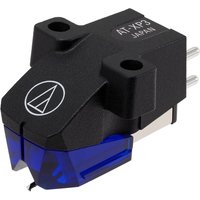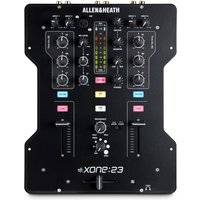Welcome to the thrilling world of DJing! As a beginner, one of the most crucial decisions you’ll make is selecting your first DJ mixer. This guide is designed to help you navigate the sea of options and find a mixer that not only fits your current needs but also supports your growth as a DJ.

Understanding DJ Mixers
Before diving into the specifics, it’s important to understand what a DJ mixer is and its role. A DJ mixer is the heart of a DJ setup, allowing you to blend tracks, adjust levels, and add effects. It sits between the turntable or controller and the amp.
It’s where the magic happens – the blending of tracks to create a seamless musical journey.
Key Components of a DJ Mixer
A DJ mixer, as the centerpiece of your setup, comprises several crucial components that collectively define your mixing capabilities. Let’s delve deeper into each of these components:
1. Channels
- Function: Channels are the pathways through which audio signals from different sources (like turntables, CDJs, or digital audio from a laptop) travel.
- Usage: Each channel has its own set of controls. You can play a track from one source on one channel and another track from a different source on another. This separation allows you to independently manipulate different audio sources, a fundamental aspect of DJing.
2. Faders
- Function: Faders are sliding controls that adjust the volume of each channel.
- Usage: By moving a fader up or down, you increase or decrease the volume of the corresponding channel. Faders are essential for smoothly transitioning between tracks, managing the overall mix’s dynamics, and ensuring that no one element overpowers the others.
3. Crossfader
- Function: The crossfader is a horizontal sliding control that allows you to blend or switch between two channels (usually assigned as left and right).
- Usage: This is crucial for transitioning between tracks. By sliding the crossfader from one side to the other, you can smoothly transition from playing one track to another, creating a seamless flow in your set.
4. EQ Controls
- Function: EQ (Equalization) controls allow you to adjust the balance of frequency ranges – typically low (bass), midrange, and high (treble) frequencies.
- Usage: By tweaking these controls, you can shape the sound of each track. For example, you might reduce the bass on one track while increasing it on another to create a balanced mix. EQs are vital for blending tracks harmoniously and managing how different elements of each track interact with each other.
5. Effects (FX)
- Function: Many mixers come with built-in effects like reverb, echo, phaser, flanger, and more.
- Usage: Effects can add depth, texture, and excitement to your mix. You can use them subtly to enhance the music or more prominently to create dramatic transitions or highlight certain parts of a track. Understanding how and when to apply effects is a skill that adds to your unique style as a DJ.
Choosing the Right Mixer
1. Identify Your Needs
- Skill Level: Are you just starting, or do you have some experience?
- Music Genre: Some mixers cater to specific genres with their features.
- Future Goals: Consider where you want to take your DJing.
2. Budget
DJ mixers range from affordable entry-level options to professional-grade mixers. Set a realistic budget, but remember, investing a bit more can offer longevity in terms of features and build quality.
3. Features to Look For
- Number of Channels: Most beginners start with two, but four can offer more flexibility.
- Quality of Faders and Knobs: Look for durability and smoothness.
- Built-in Effects: Useful for adding creativity to your mixes.
- Connectivity: Ensure it has the necessary inputs and outputs for your setup.
- USB/MIDI Compatibility: Great for integrating with DJ software.
Additional Considerations
- Build Quality: A well-built mixer can withstand the rigors of DJing and last longer.
- Layout and Ergonomics: The layout should be intuitive, and controls should be easily accessible for smooth operation.
- Inputs/Outputs: Ensure the mixer has the necessary connections for your setup, including inputs for turntables or media players and outputs for speakers and recording.
Top Beginner-Friendly DJ Mixers
- Pioneer DJ DJM-250MK2: A great all-rounder with built-in soundcard.
- Numark M6 USB: Affordable and versatile with four channels.
- Allen & Heath Xone:23: Known for its sound quality and robust build.
Learning to Use Your Mixer
1. Understanding the Layout
Familiarize yourself with the layout of your mixer. Knowing where each control is and what it does is crucial.
2. Practice Basic Techniques
Practicing DJing is an art form that blends technical skill with creative expression. One effective practice technique is to start with mastering the basics. This means spending time understanding your equipment, from the layout of your DJ mixer to the functionalities of your turntables or controllers. Begin by familiarizing yourself with beatmatching – the skill of aligning the beats of two separate tracks to play in sync. Use a mix of tracks you’re comfortable with and some unfamiliar ones to challenge yourself. Experiment with transitioning between tracks, focusing on smooth fader movements and timely EQ adjustments. Regularly record your sessions to identify areas for improvement, like transitions that could be smoother or track selections that could be more harmonious.
Once comfortable with the basics, delve into more complex techniques like scratching, looping, and using effects. Set aside specific practice sessions for each technique. For instance, dedicate time solely to experimenting with different effects, understanding how they alter the sound and mood of a track.
Moreover, actively listen to mixes from established DJs, noting their techniques, transitions, and how they build a set’s energy. This can inspire your style and give you new ideas to try out. Lastly, practice sessions should be consistent but also enjoyable. It’s essential to keep the passion for music alive, as it fuels creativity and innovation in your DJing journey. Remember, practice in DJing is as much about honing technical skills as it is about cultivating your unique sound and style.
3. Experiment and Listen
Experiment with different settings and listen critically to how they affect the sound.
Enhancing Your Skills
1. Online Tutorials and Courses
There are numerous online resources available to help you improve your skills.
2. Practice Regularly
Like any skill, regular practice is key to improvement.
3. Join a Community
Connect with other DJs to learn new techniques and get feedback.
Conclusion
Choosing your first DJ mixer is a significant step in your DJ journey. By understanding your needs, doing your research, and practicing regularly, you’ll be well on your way to mastering the art of DJing. Remember, the best mixer is one that feels right for you and helps you express your creativity.
CHECK PRICES AT ZZOUNDS


